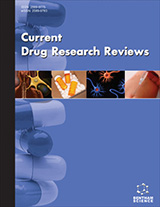Abstract
Engulfing almost 537 million people, the most commonly occurring metabolic disorder, diabetes mellitus, is emerging as an epidemic worldwide. Diabetes mellitus is identified as a heterogeneous pathological condition that is marked by extreme hyperglycemic (glucose) levels caused by reduced insulin sensitivity. Synthetic antidiabetic medications are widely commercialized but have slowly expressed several inevitable side effects and limitations in treated diabetic subjects. Researchers have been exploring herbal medicine due to its esteemed therapeutic effects. WHO have enlisted almost 21,000 herbal components that have established therapeutic benefit. Several herbs, most of them widely available, have been studied to extract their active phytoconstituents that have effective diabetes management potential with the least risk factor for side effects and acute toxicity. Though acceptable standardization, awareness, and clinical trials are yet to be established before mainstreaming herbal formulation, preclinical studies have confirmed the higher safety and efficacy of several extracted phytoconstituents and formulation in comparative analysis with synthetic products. The authors have also discussed their opinions with regard to the vast usability of herbal components along with the multi-target functionality of several phytoconstituents, as well as the challenges faced for standardizing, formulating, and marketing herbal medicines. Other than this, several cases of clinical trials showing effectivity of herbal antidiabetic aid are mentioned. In this review, an attempt has been made to summarize the potential antidiabetic herbs, marketed herbal formulations, and patented formulations that have established therapeutic prospects to downregulate diabetic conditions.
Graphical Abstract
[http://dx.doi.org/10.2174/0929867033457287] [PMID: 12871132]
[http://dx.doi.org/10.7326/0003-4819-98-3-378] [PMID: 6402969]
[http://dx.doi.org/10.1016/j.diabres.2019.107843] [PMID: 31518657]
[http://dx.doi.org/10.1007/s00592-003-0115-x] [PMID: 14704864]
[http://dx.doi.org/10.1016/j.foodres.2021.110182] [PMID: 33773658]
[http://dx.doi.org/10.3810/pgm.2010.05.2152] [PMID: 20463424]
[http://dx.doi.org/10.1002/food.19970410203] [PMID: 9188186]
[http://dx.doi.org/10.1155/2016/1062430] [PMID: 26942038]
[http://dx.doi.org/10.1016/j.jep.2009.10.038] [PMID: 19900528]
[http://dx.doi.org/10.1248/bpb.29.1418] [PMID: 16819181]
[http://dx.doi.org/10.1016/j.jsps.2009.08.007] [PMID: 23964163]
[http://dx.doi.org/10.1016/j.fitote.2015.03.012] [PMID: 25776008]
[http://dx.doi.org/10.1108/00070701311331526]
[http://dx.doi.org/10.1016/j.jep.2013.08.051] [PMID: 24041460]
[http://dx.doi.org/10.1002/ptr.2642] [PMID: 19003941]
[http://dx.doi.org/10.1371/journal.pone.0213147] [PMID: 30845182]
[http://dx.doi.org/10.1016/S0378-8741(01)00254-9] [PMID: 11448549]
[http://dx.doi.org/10.1016/S0378-8741(99)00096-3] [PMID: 10687870]
[http://dx.doi.org/10.1016/j.phymed.2007.06.004] [PMID: 17689943]
[http://dx.doi.org/10.34297/AJBSR.2019.05.000917]
[http://dx.doi.org/10.20959/wjpps20178-9947]
[http://dx.doi.org/10.1080/10408398.2015.1077195] [PMID: 26528921]
[PMID: 29624265]
[http://dx.doi.org/10.2174/1381612825666190402163940] [PMID: 30947655]
[http://dx.doi.org/10.18388/abp.2012_2139] [PMID: 22590694]
[http://dx.doi.org/10.1155/2013/636053] [PMID: 24348712]
[http://dx.doi.org/10.1089/jmf.2005.8.251] [PMID: 16117620]
[http://dx.doi.org/10.1002/mnfr.200700184] [PMID: 18398869]
[http://dx.doi.org/10.1016/S2221-1691(11)60052-X] [PMID: 23569784]
[http://dx.doi.org/10.1155/2017/6949835] [PMID: 29456572]
[http://dx.doi.org/10.1002/jcb.27398] [PMID: 30191607]
[http://dx.doi.org/10.1080/09168451.2017.1353403] [PMID: 28743229]
[http://dx.doi.org/10.1111/j.1464-5491.2005.01566.x] [PMID: 15910615]
[http://dx.doi.org/10.3390/ijms11041365] [PMID: 20480025]
[http://dx.doi.org/10.3390/scipharm87020013]
[http://dx.doi.org/10.52547/pbp.2.2.31]
[http://dx.doi.org/10.1016/B978-0-12-398456-2.00046-3]
[http://dx.doi.org/10.3390/molecules22050761] [PMID: 28481316]
[http://dx.doi.org/10.2174/1573401312666160608121954]
[http://dx.doi.org/10.13140/2.1.3278.7523]
[http://dx.doi.org/10.1016/B978-0-12-813822-9.00009-6]
[http://dx.doi.org/10.1159/000069929] [PMID: 12747088]
[http://dx.doi.org/10.3390/molecules24193473] [PMID: 31557828]
[http://dx.doi.org/10.4103/0974-8490.94719] [PMID: 22518078]
[http://dx.doi.org/10.1016/j.jaim.2017.02.005] [PMID: 28988684]
[http://dx.doi.org/10.1111/j.1753-0407.2009.00022.x] [PMID: 20929506]
[PMID: 16865205]
[http://dx.doi.org/10.3390/molecules26123625] [PMID: 34199316]
[http://dx.doi.org/10.2174/2210289201304010059]
[http://dx.doi.org/10.4103/0973-7847.156356] [PMID: 26009696]
[http://dx.doi.org/10.13005/bpj/1797]
[PMID: 20363702]
[http://dx.doi.org/10.13040/IJPSR.0975-8232.1(1).29-46]
[http://dx.doi.org/10.4103/pr.pr_116_19]
[http://dx.doi.org/10.1248/yakushi.128.141] [PMID: 18176066]
[PMID: 23860893]
[http://dx.doi.org/10.1155/2016/7382506] [PMID: 27034694]
[http://dx.doi.org/10.1016/j.foodchem.2008.02.068]
[PMID: 24825970]
[http://dx.doi.org/10.1155/2021/3796265] [PMID: 33510802]
[http://dx.doi.org/10.1007/s12038-011-9042-0] [PMID: 21654091]
[PMID: 33643564]
[http://dx.doi.org/10.1016/j.jafr.2020.100081]
[http://dx.doi.org/10.1002/ptr.6964] [PMID: 33278054]
[http://dx.doi.org/10.3389/fphar.2018.00423] [PMID: 29765322]
[http://dx.doi.org/10.9734/JPRI/2018/41878]
[http://dx.doi.org/10.2174/157489112799829701] [PMID: 22353000]
[http://dx.doi.org/10.1155/2016/2965214] [PMID: 27891158]
[http://dx.doi.org/10.1016/j.jtcme.2017.08.012] [PMID: 29992107]
[http://dx.doi.org/10.4258/hir.2012.18.3.231]
[http://dx.doi.org/10.13140/2.1.5178.7207]
[http://dx.doi.org/10.3164/jcbn.2007001] [PMID: 18392106]
[http://dx.doi.org/10.1177/009286159803200]
[http://dx.doi.org/10.1186/2251-6581-12-35] [PMID: 23822656]
[http://dx.doi.org/10.1016/j.bfopcu.2012.03.002]
[http://dx.doi.org/10.1254/jphs.08189FP] [PMID: 19151545]
[http://dx.doi.org/10.1034/j.1600-0773.2002.900508.x] [PMID: 12076309]
[http://dx.doi.org/10.3164/jcbn.11-014FR] [PMID: 21297916]
[PMID: 17051732]
[http://dx.doi.org/10.3109/13880209.2010.516755] [PMID: 21281245]
[http://dx.doi.org/10.1016/S2222-1808(14)60501-6]
[http://dx.doi.org/10.1007/s40200-021-00762-x] [PMID: 34178849]
[http://dx.doi.org/10.21608/mkas.2021.197513]
[http://dx.doi.org/10.19071/cb.2017.v8.3169]
[http://dx.doi.org/10.1007/s00125-011-2366-3] [PMID: 22095235]
[http://dx.doi.org/10.1371/journal.pone.0024224] [PMID: 21887385]
[http://dx.doi.org/10.1002/jcp.28528] [PMID: 30916407]
[http://dx.doi.org/10.12659/MSM.915242] [PMID: 30830898]
[http://dx.doi.org/10.1016/j.lfs.2008.03.005] [PMID: 18433791]
[http://dx.doi.org/10.1155/2013/378657] [PMID: 23662132]
[http://dx.doi.org/10.1016/j.biopha.2020.110702] [PMID: 32882583]
[http://dx.doi.org/10.1016/j.jep.2007.08.040] [PMID: 17961942]
[http://dx.doi.org/10.2337/diacare.12.8.553] [PMID: 2673695]
[http://dx.doi.org/10.1002/ptr.2754] [PMID: 19170143]
[http://dx.doi.org/10.1002/ptr.1988] [PMID: 17072885]




























